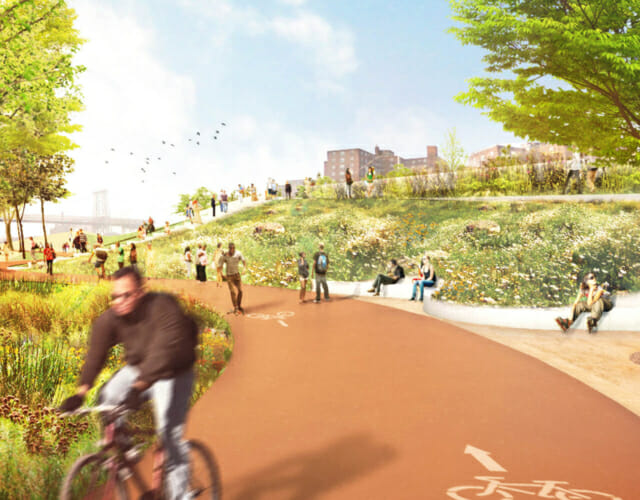See how BIG is helping improve the sustainability of cities
Kai-Uwe Bergmann with the Dryline model
Kai-Uwe Bergmann with the Dryline model
East side Coastal Resiliency project before the storm (renders courtesy of BIG)
East side Coastal Resiliency project before the storm (renders courtesy of BIG)
Model making
Model making
Harbor bath (renders courtesy of BIG)
Harbor bath (renders courtesy of BIG)
Up Next:
Sustainability
Sustainability
